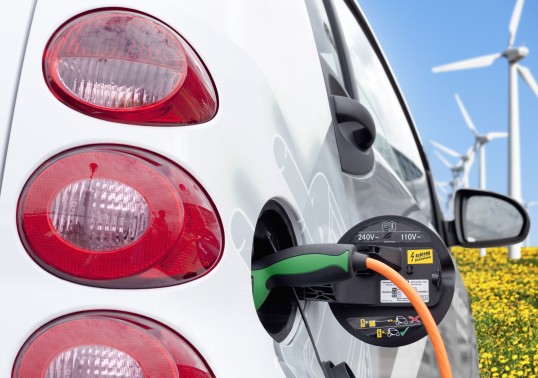- Artificial Intelligence (AI)
- Occupational exposure limit values
- Climate Change and Occupational Safety
- List of CMR substances
- Electromagnetic fields
- Ergonomics
- Industrial Security
- Collaborative robots
- Noise
- Nanoparticles at the workplace
- Optical Radiation
- REACH
- Reference materials
- Proficiency testing
- Vibration
- Virtual reality
- Work 4.0
Alternative drivetrain technologies

Source: Tom-Hanisch.de - Fotolia
Background
The German government is supporting the expansion of electromobility, for example with subsidies, and implementation of the Clean Vehicles Directive, which sets minimum targets for the public sector for procurement of zero and low-emission passenger cars and light and heavy commercial vehicles. This will result in companies and establishments insured by the German Social Accident Insurance also increasingly using electric vehicles.
Work of the KKA at the IFA
The DGUV’s Prevention Managers’ Conference has responded to this development by agreeing to the formation of an electromobility working group, which is to include the individual accident insurance institutions under the overall control of the IFA. The aim of this working group is to bring current activities concerning electromobility within the DGUV together, and to identify existing contacts within the organization. Since the topic of electromobility is of interest to all the German Social Accident Insurance Institutions, the working group is to enable perspectives to be harmonized, and solutions agreed throughout the DGUV to be developed and made available.
In view of the growing use of electric drivetrains on construction machinery, the IFA has been commissioned by the DGUV Test Testing and Certification Body of the Expert committee Construction industry to develop test specifications for construction machinery with electric drivetrains. The test specifications are to cover the requirements concerning such machinery and describe tests to verify the measures taken. Requirements are also to be defined for the test personnel responsible for applying the test specifications.
Should lithium-ion batteries (LIBs) in electric cars be directly affected by a vehicle fire, special firefighting measures are required. The DGUV’s Expert committee Fire and emergency services, fire prevention and protection has addressed this issue and evaluated various options for fighting an LIB fire. The IFA provided support by performing electrical measurements during live extinguishing tests with use of an extinguishing lance, in order to assess the potential hazards to firefighters presented by its use. The results were adopted directly during revision of the Fachbereich AKTUELL FBFHB-024 brochure (instructions for extinguishing burning lithium-ion batteries during vehicle fires).
As part of the RiskBatt project (risk analysis for lithium-based energy storage systems in the event of safety-critical accidents with special consideration of the toxic and explosive gases released) funded by the German Federal Ministry for Economic Affairs and Climate Action (BMWK), the aspects studied include contamination of the environment by fires involving lithium-ion batteries. The parties to this project are TU Clausthal research university, the BG ETEM and the DGUV’s Expert committee Fire services, assistance and protection (FB FHB). The IFA supported the project from the outset with its expertise in analytics.
For example, residues in the form of material and wipe samples from combustion tests on lithium-ion batteries were analysed for polycyclic aromatic hydrocarbons (PAHs) and for various metals. In addition, the IFA examined water samples taken from skips following real-case deployments in fires of hybrid vehicles or lithium-ion batteries. The PAH analyses failed to reveal any conspicuous concentrations; only the metals in deposited dusts were therefore analysed in subsequent combustion tests performed at TU Clausthal. These dusts exhibited high metal concentrations, particularly of metals forming part of the battery, such as the carcinogenic metals of nickel and cobalt, and also manganese. The batteries’ metal content is reflected clearly in the residues from the combustion tests.
Contact

Competence Centre for Climate Change and Occupational Safety and Health at the IFA
Email: kka@dguv.de
Contact:
Christian Wemer
Tel.: +49 30 13001-3520
Further Information

Projects:
From the Fachbereich AKTUELL series: (in German only)
FBFHB-024 (instructions for extinguishing burning lithium-ion batteries during vehicle fires)
DGUV Information: (in German only)
DGUV Information 205-041 (fire safety in the use of lithium-iron batteries)